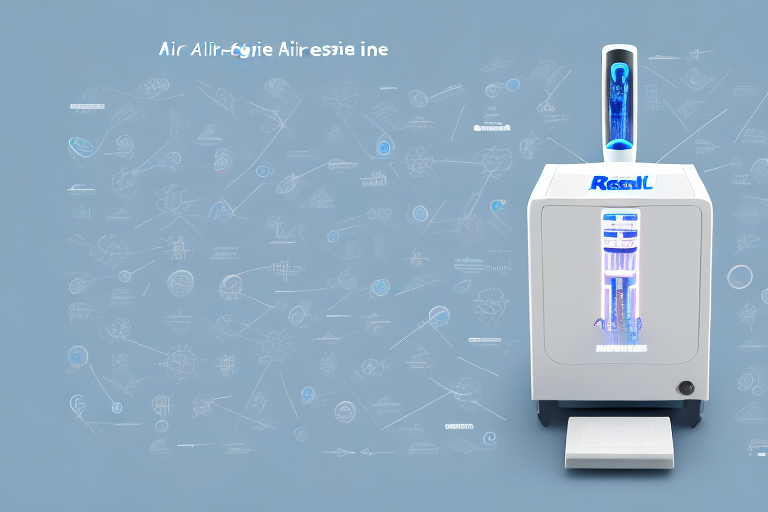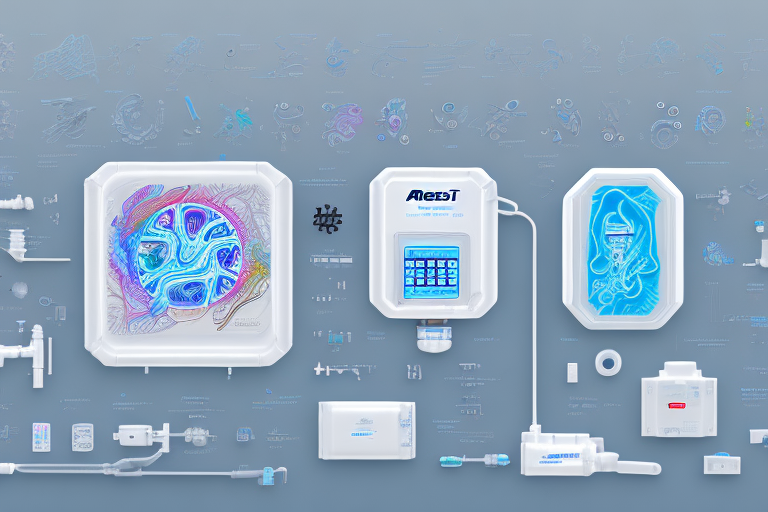
Unlocking the Full Potential of Your ResMed AirSense 10: Tips and Tricks for Maximizing Comfort and Efficiency
Are you struggling to get the most out of your ResMed AirSense 10 device? Do you feel like you’re not getting the quality sleep you need to feel alert and energized throughout the day? Don’t worry, you’re not alone. Many people find it challenging to navigate the various features and settings on their CPAP machine. That’s why we’ve put together this comprehensive guide to help you unlock the full potential of your ResMed AirSense 10. Let’s dive in!
Understanding Your ResMed AirSense 10 Device
Before we dive into the tips and tricks, it’s essential to have a basic understanding of your resmed airsense 10 device’s key features and functions. This machine is designed to deliver continuous positive airway pressure (CPAP) therapy to individuals with sleep apnea. It works by delivering a continuous flow of air pressure through a mask to keep your airways open while you sleep.
Sleep apnea is a common sleep disorder that affects millions of people worldwide. It occurs when the muscles in the back of your throat fail to keep your airway open, causing you to stop breathing for brief periods throughout the night. This can lead to poor sleep quality, daytime fatigue, and other health problems if left untreated.
Key Features and Functions
The ResMed AirSense 10 has several key features and functions that can help enhance your therapy experience. These features include:
AutoRamp Technology
This feature gradually increases the air pressure to your prescribed setting as you fall asleep to help you adjust more comfortably. This can be especially helpful if you find it difficult to fall asleep with the higher air pressure.
Expiratory Pressure Relief (EPR)
This allows you to lower the air pressure during exhalation, making it easier to breathe out against the pressure. This can help reduce discomfort and make it easier to fall asleep.
Integrated Humidifier
This feature can help reduce dryness and irritation in your nose and throat. This is especially important if you live in a dry climate or experience nasal congestion or dryness.

Navigating the Menu and Settings
Now that you’re familiar with your machine’s key features, it’s time to learn how to navigate the menu and settings. Depending on the model, the ResMed AirSense 10 may have a touch screen display or physical buttons. Either way, you’ll want to spend some time exploring the menu options, including:
Therapy settings
This is where you can adjust the air pressure, humidity levels, and EPR settings to suit your needs. It’s important to work with your healthcare provider to find the settings that work best for you.
Data recording
This is where you can view your sleep data and progress over time. This can be helpful in tracking your therapy progress and identifying any issues that may need to be addressed.
Mask settings
This is where you can adjust settings specific to your mask, such as the mask type and mask fit. It’s important to ensure that your mask fits properly to ensure optimal therapy.
It’s also important to clean your machine and mask regularly to ensure proper hygiene and prevent the buildup of bacteria and other contaminants. Your healthcare provider can provide guidance on the best cleaning practices for your specific machine and mask.
In conclusion, the ResMed AirSense 10 is a powerful tool in the treatment of sleep apnea. By understanding its key features and functions and learning how to navigate the menu and settings, you can optimize your therapy experience and improve your sleep quality and overall health.
Optimizing Your Sleep Therapy Experience
Once you’re familiar with your device’s basic features and settings, it’s time to focus on optimizing your sleep therapy experience. There are several things you can do to help get the most out of your ResMed AirSense 10:
Choosing the Right Mask and Fit
The first step to optimizing your therapy experience is to make sure you’re using the right mask and that it fits properly. There are several different types of masks available, including nasal masks, full face masks, and nasal pillow masks. Work with your healthcare provider to determine which type of mask is best for you.
It’s important to note that the right mask fit is crucial for effective therapy. If your mask doesn’t fit properly, you may experience air leaks, which can reduce the effectiveness of your therapy. Your healthcare provider can help you find the right fit by adjusting the straps and ensuring the mask is snug but not too tight.
Adjusting Pressure Settings for Personal Comfort
Next, you’ll want to make sure your air pressure settings are adjusted to your comfort level. If your pressure is too low, you may not be getting the full benefits of therapy. Conversely, if your pressure is too high, you may experience discomfort or air leaks. Work with your healthcare provider to find the right pressure settings for your needs.
It’s important to note that pressure settings can change over time, so it’s a good idea to have regular check-ins with your healthcare provider to ensure your therapy is still effective.
Utilizing the Ramp and EPR Features
The Ramp and EPR features can be helpful for individuals who are having trouble adjusting to therapy. The Ramp feature gradually increases the air pressure to your prescribed setting as you fall asleep, while the EPR feature allows you to lower the air pressure during exhalation, making it easier to breathe out against the pressure.
It’s important to note that not everyone needs to use the Ramp and EPR features, so work with your healthcare provider to determine if these features are right for you.
Maintaining Your Equipment
Proper maintenance of your equipment is crucial for effective therapy. Be sure to follow the manufacturer’s instructions for cleaning and replacing your equipment. This includes regularly washing your mask and tubing, and replacing your mask cushions and filters as needed.
In addition to regular maintenance, it’s important to have your equipment checked by a healthcare professional on a regular basis to ensure it’s still functioning properly.
Establishing a Bedtime Routine
Establishing a regular bedtime routine can also help optimize your sleep therapy experience. This can include activities such as taking a warm bath or shower, reading a book, or practicing relaxation techniques such as deep breathing or meditation.
It’s important to avoid activities that can interfere with sleep, such as using electronic devices or consuming caffeine before bedtime.
Tracking Your Progress
Tracking your progress can also help optimize your sleep therapy experience. Keep a sleep diary to track your sleep patterns and any issues you may be experiencing. This can help you and your healthcare provider identify any areas for improvement.
In addition to a sleep diary, there are also apps and devices available that can track your sleep and therapy data. Talk to your healthcare provider to see if these tools may be helpful for you.
Conclusion
Optimizing your sleep therapy experience takes time and effort, but the benefits are well worth it. By working with your healthcare provider to choose the right mask and pressure settings, utilizing helpful features like Ramp and EPR, maintaining your equipment, establishing a bedtime routine, and tracking your progress, you can achieve more restful and effective sleep.

Maintaining and Cleaning Your ResMed AirSense 10
Proper maintenance and cleaning are essential for ensuring the longevity and effectiveness of your ResMed AirSense 10 device. Not only will this help to keep your device in good working order, but it will also help to ensure that you get the most out of your therapy. Here are some additional tips to help you maintain and clean your ResMed AirSense 10:
Cleaning the Humidifier and Tubing
The humidifier and tubing should be cleaned daily to prevent the buildup of bacteria and mold. This is especially important if you use your device every night. To clean the humidifier, remove the water chamber and wash it with warm, soapy water. Be sure to rinse the chamber thoroughly and let it air dry before reassembling it. To clean the tubing, disconnect it from the machine and mask and wash it in warm, soapy water. You can use a tube brush to help remove any stubborn residue. Once you’ve washed the tubing, be sure to rinse it thoroughly and allow it to air dry.
It’s also important to note that you should never put your humidifier or tubing in the dishwasher or washing machine. This can cause damage to the components and may affect the performance of your device.
Replacing Filters and Other Components
In addition to cleaning your humidifier and tubing, it’s important to replace certain components of your ResMed AirSense 10 device on a regular basis. This includes filters, mask cushions, and tubing. Check your user manual for recommended replacement schedules and be sure to follow them to ensure optimal performance. In general, filters should be replaced every 1-3 months, depending on usage, while mask cushions and tubing should be replaced every 6 months to a year.
When replacing your filters, be sure to use only ResMed-branded filters. Using non-ResMed filters can affect the performance of your device and may even damage it. You can purchase replacement filters, mask cushions, and tubing directly from ResMed or from your healthcare provider.
Troubleshooting Common Issues
If you’re experiencing issues with your ResMed AirSense 10 device, such as air leaks, discomfort, or difficulty falling asleep, there may be several possible solutions. Try adjusting your mask fit, pressure settings, or using the Ramp or EPR features to see if that helps. If you’re still having issues, reach out to your healthcare provider for further guidance. They can help you troubleshoot any issues you’re experiencing and may even be able to adjust your device settings remotely.
It’s also important to note that if you experience any sudden changes in your symptoms or if you feel that your device is not working properly, you should contact your healthcare provider right away. They can help you determine the cause of the issue and provide you with the appropriate treatment.

Monitoring Your Sleep Data and Progress
Tracking your sleep data and progress is an important part of optimizing your therapy experience. By monitoring your progress, you can make adjustments to your settings or habits to improve your overall sleep quality. Here’s what you need to know:
Interpreting Sleep Reports and Statistics
Your ResMed AirSense 10 device tracks several metrics while you sleep, including AHI (apnea-hypopnea index), leak rate, and usage time. By reviewing these metrics regularly, you can see how well your therapy is working and make adjustments as needed.
Using the myAir App for Personalized Insights
The myAir app is a free app available to ResMed AirSense 10 users that provides personalized insights and tips based on your sleep data. Use the app to track your progress and get insights into how to improve your sleep quality.
Sharing Data with Your Healthcare Provider
Finally, it’s essential to share your sleep data with your healthcare provider regularly. This will help them monitor your progress and make adjustments to your therapy as needed. Be sure to attend all recommended follow-up appointments and bring your device and sleep data with you.
Conclusion
By following these tips and tricks, you can unlock the full potential of your ResMed AirSense 10 device and get the quality sleep you need to feel your best. Remember to work closely with your healthcare provider and be open to trying new things to find what works best for you. Sweet dreams!
Related – The Evolution of CPAP Machines in Treating Sleep Apnea
